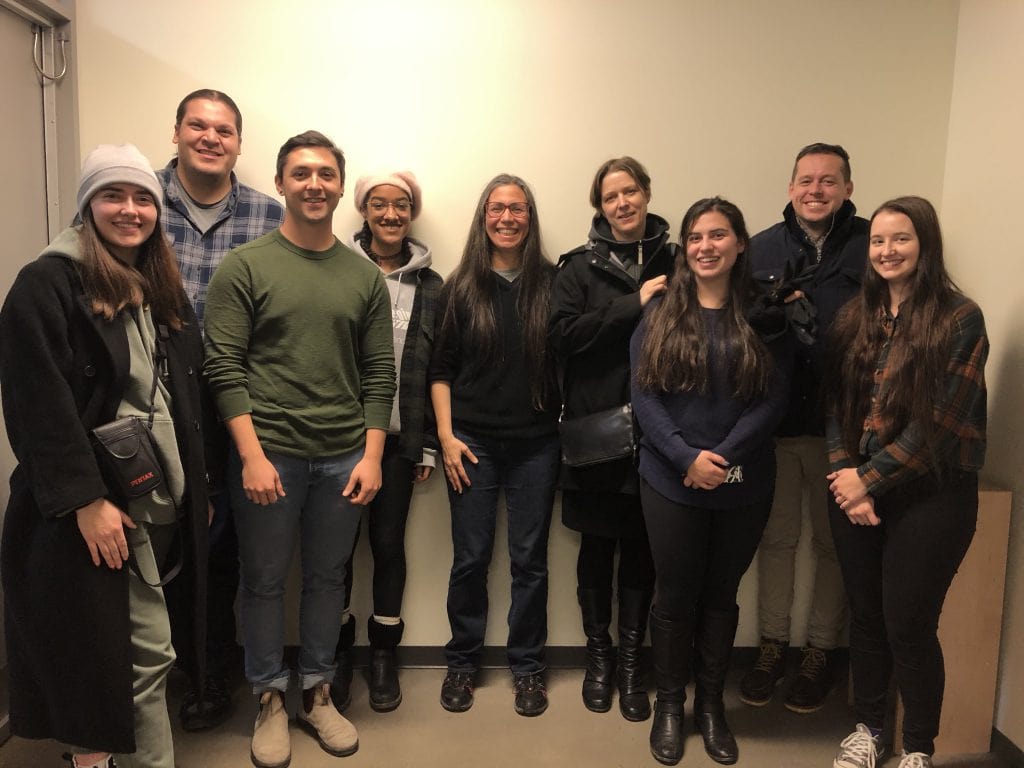Skins Hacking Workshop
- Location: Concordia University, Montreal, QC
- Date: November 28th – 29th, 2019
- Duration: 2 days
- Instructors: Jane Tingley, Skawennati
Overview: Aboriginal Territories in Cyberspace (AbTeC) and the Initiative for Indigenous Futures (IIF) are always looking to tell Indigneous stories in new ways. On November 28-29, 2019, IIF co-investigator Jane Tingley visited us at AbTeC headquarters to lead a workshop on the Bare Conductive Touch Board alongside Skawennati in the Milieux Makerspace. Workshop participants included Anastasia, Maize, and Waylon representing AbTeC and IIF, as well as Indigenous students Caitlin Court, Rachel Neufeld, and Sydney Hannusch from the University of Waterloo. Logan MacDonald, Assistant Professor of Indigenous Arts at UofW, also joined us. The Touch Board is an Arduino-powered interactive microcontroller programmed to play MP3 audio files when its sensors are touched. Depending on what sounds are loaded onto the Touch Board and how it is configured, this microcontroller can be used to create interactive art, MIDI instruments, and more that responds to human touch!
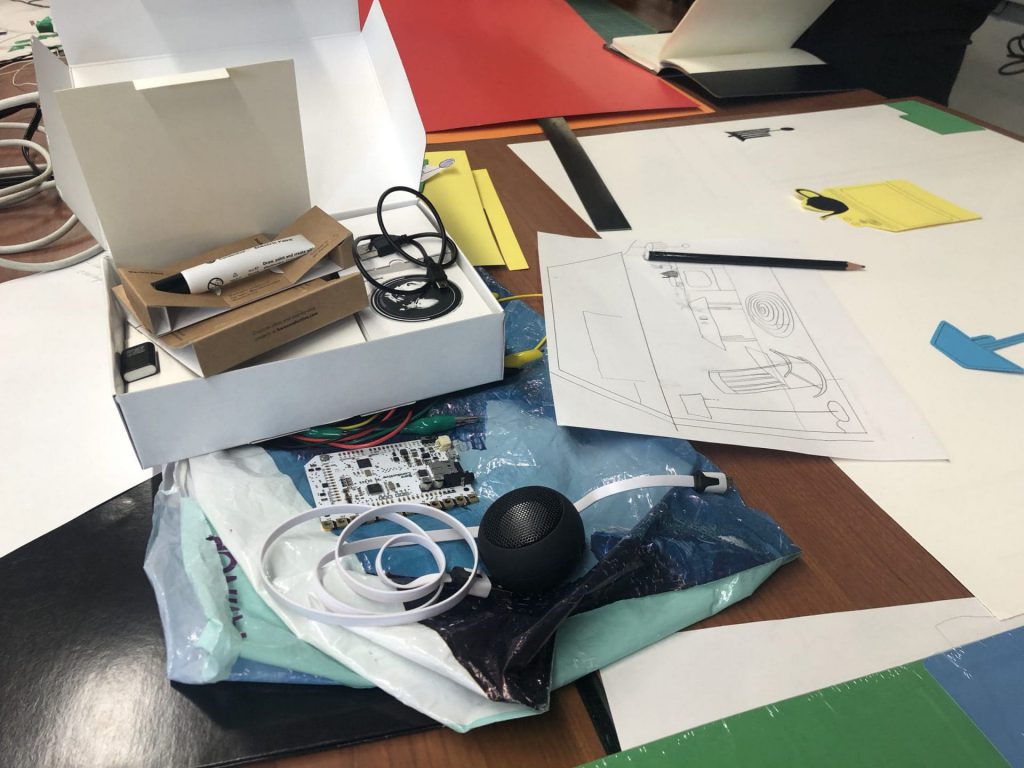
Day 1
The first day of the workshop began with group introductions and a collective recitation of the Ohén:ton Kariwatékwen (Thanksgiving Address). We then had a short presentation from Skawennati and Maize on AbTeC, IIF, and the Skins Workshops on Aboriginal Storytelling and Digital Media. They explained how the majority of the Skins workshops require powerful computers for videogame or machinima production and that developing a new workshop focusing on storytelling through hardware hacking with the Touch Board might strike the perfect balance between high and low-tech workshop options.
After the preface, Jane took the floor and introduced everyone to the Touch Board. She explained the microcontroller’s components, how it processes interactions through either touch or proximity sensing, and the various methods of how to make touch and proximity points. This introduction concluded with a quick prototyping session where the participants formed groups and made touch points using random conductive objects found around the Makerspace, including tools, plants and even an apple! Everyone downloaded custom sounds from the web, like memes or animal noises, and converted them to MP3 files that were then copied to the board’s microSD card.
Jane continued her presentation in the afternoon by discussing the other functions of the Touch Board. Because the Touch Board is also an Arduino, users have access to a worldwide community of developers who freely share their open-source code. Everyone downloaded Arduino and swapped their Board’s default touch code for proximity code and retested the morning’s creations. Participants simply had to bring our hands close to the conductive point for the board to register sensor input. Just like magic! Proximity sensing is perfect for projects that use non-conductive materials for their interfaces. Conductive points can be hidden by non-conductive materials and still provide the same touch effect using proximity sensing.
After the presentation and testing concluded, the group move into a discussion on the possible ways that this technology might be used for Indigenous storytelling. Interactivity through sensing physical touch is the key to why the Touch Board is so unique. This feature can give users experiences that other forms of passive media cannot. Seeing as we had three boards, we brainstormed three different types of projects to try: an interactive dollhouse, a new musical instrument, and a technology from the future. Participants broke off into three groups based on their interest in each project and began designing and building their interactive art pieces for the remainder of the first day.
Day 2
Work time! After a short check-in, the groups formed the previous day reconvened and dove back into their work right where they left off. Everyone was so engaged they worked right through their scheduled breaks!
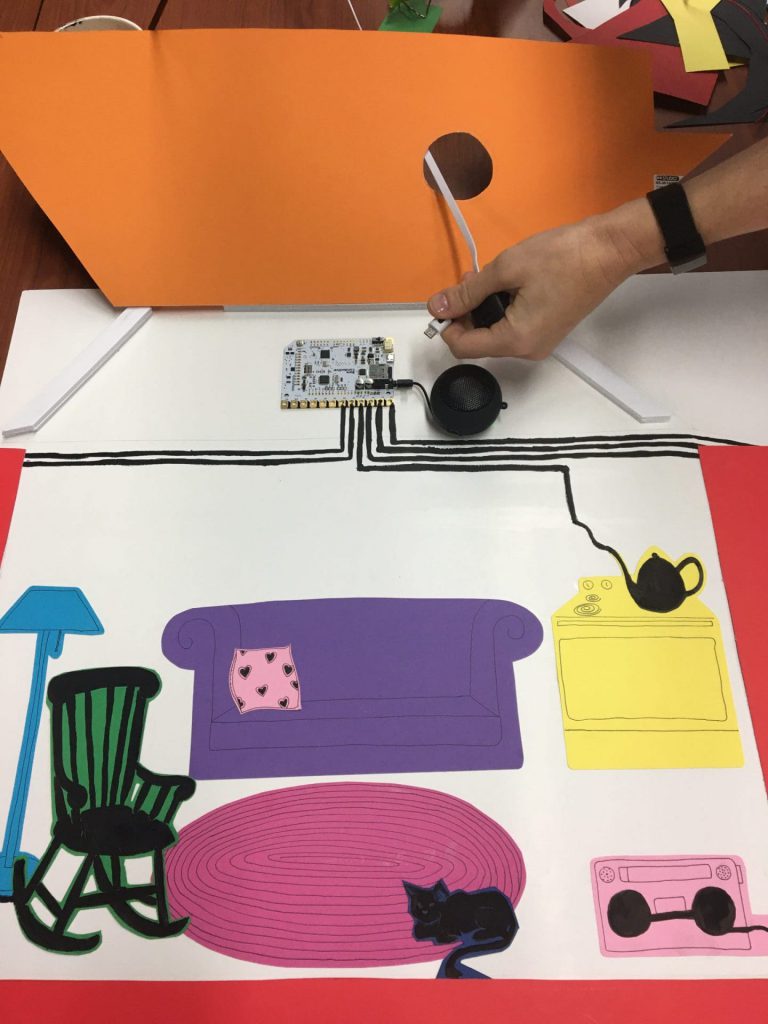
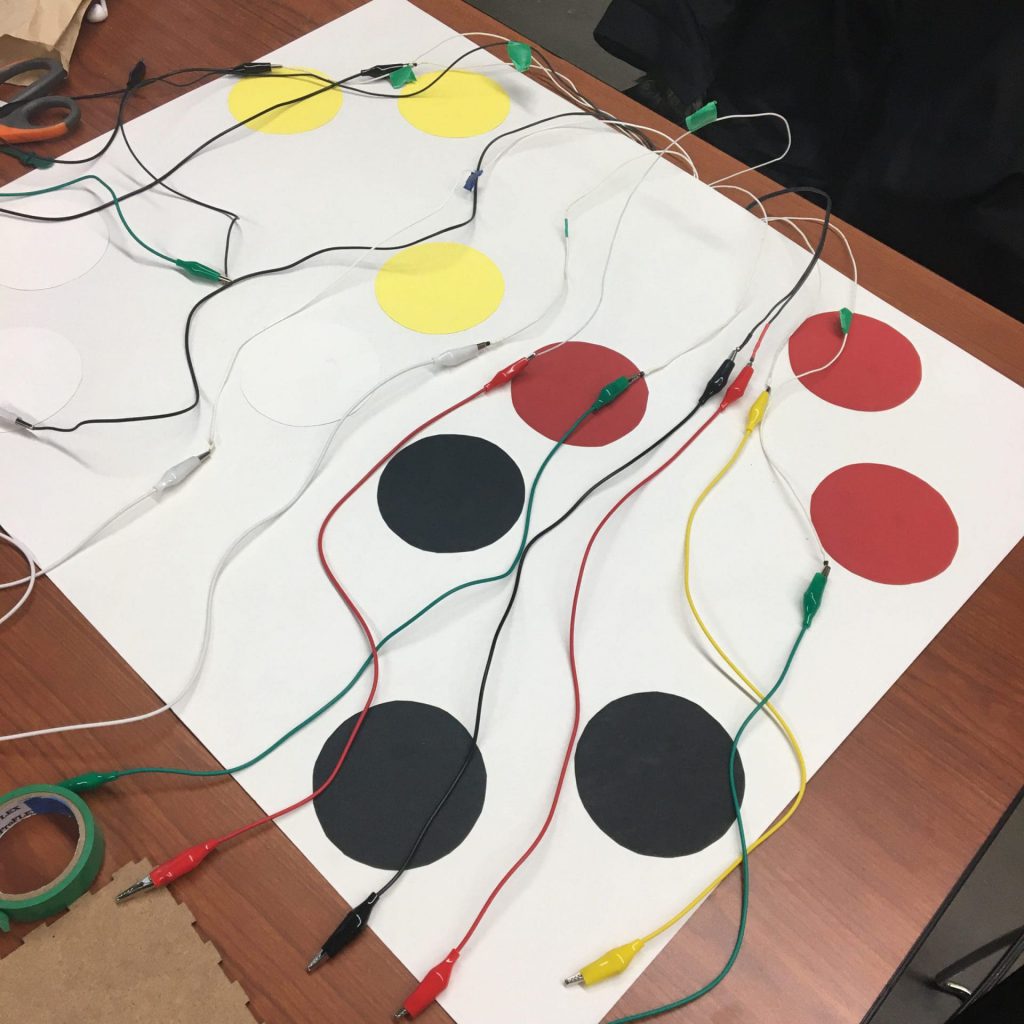
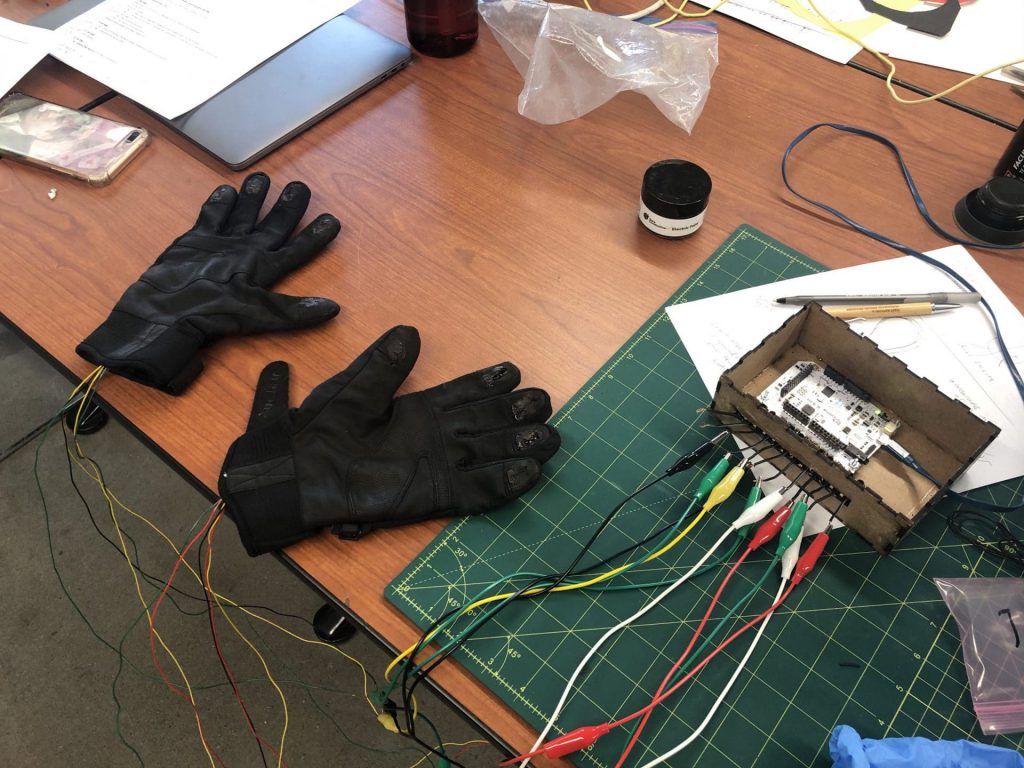
By late-afternoon each group had something to share. Everyone crowded around to view the live demonstrations, swapping places to test the interactive pieces.
Project 1: Tóta’s Dollhouse
Skawennati, Anastasia, Sydney, and Waylon
Touch
Project 2: Drum Circle Instrument
Caitlin, Rachel, and Waylon
Proximity / MIDI
Project 3: Communication Device of the Future
Logan, Maize, and Waylon
Touch
Thank you to the instructors and participants that made this workshop such a success!
